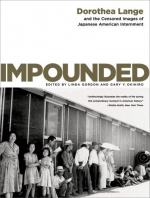|
This section contains 266 words (approx. 1 page at 300 words per page) |
Like Esther Bubley, Dorothea Lange (1895–1965) was another highly skilled female photographer whose camera would document changes on the American home front during World War II (1939–45). Lange focused especially on workers uprooted by the war. Lange's early work covered displaced farm families and migrant workers during the Great Depression (1929–41), when she worked for the Farm Security Administration (FSA). She captured one image of an exhausted thirty-two-year-old migrant mother, with three of her seven children, waiting at the edge of a worker's camp in Nipomo, California. The photograph, "Migrant Mother," is one of the best-known images to come out of the FSA's 145,000-item photographic collection made between 1935 and 1943. It is also one of the most widely reproduced and exhibited photographs in history.
Three months after Japan attacked Pearl Harbor, Hawaii, in December 1941, Lange was hired by the federal War Relocation Authority (WRA) to photograph the internment of Japanese Americans and resident aliens living in the United States. More than 110,000 people of Japanese descent were moved from their homes along the U.S. West Coast into ten wartime camps in remote areas on the American mainland. Lange encountered disturbing racial and civil rights issues raised by the Japanese internment and found herself at odds with her employer, the U.S. government. Executive Order 9066 signed by President Franklin D. Roosevelt (1882–1945; served 1933–45) called for the internment. Many of Lange's photographs showing the indignities suffered by the Japanese internees were censored by the government. The full impact of her photographs was not felt until 1972, when the Whitney Museum included twenty-seven of them in an exhibition titled "Executive Order 9066."
|
This section contains 266 words (approx. 1 page at 300 words per page) |


